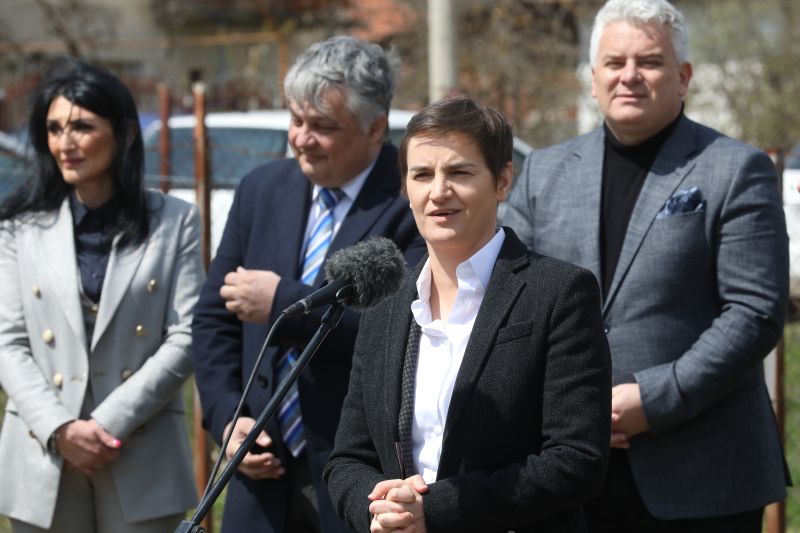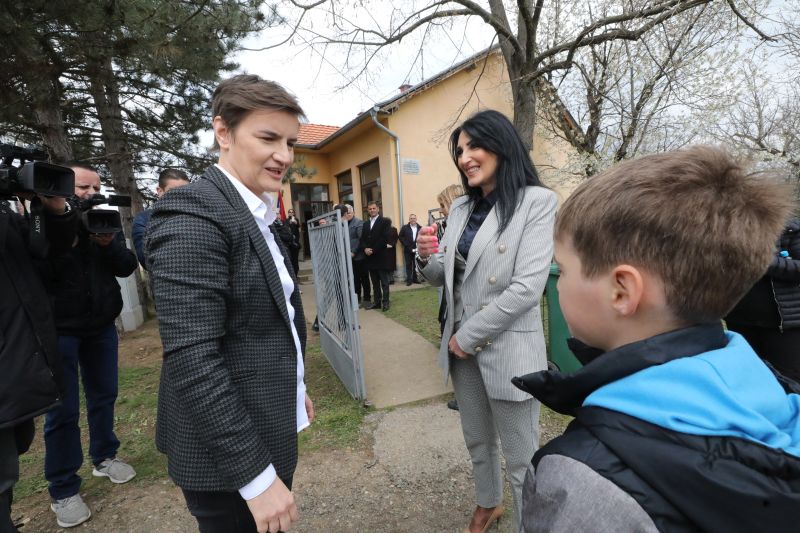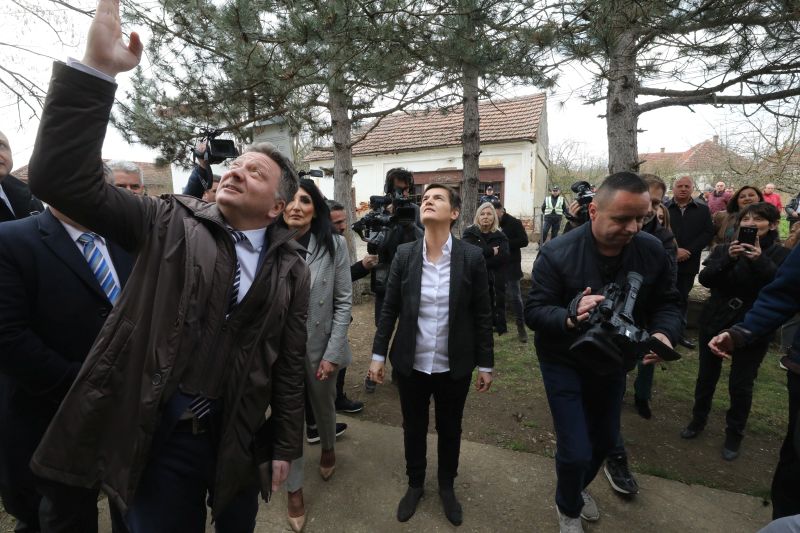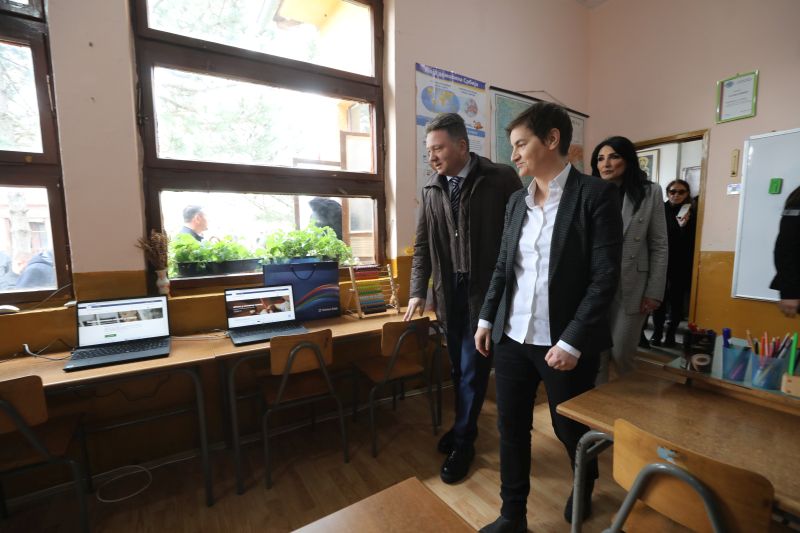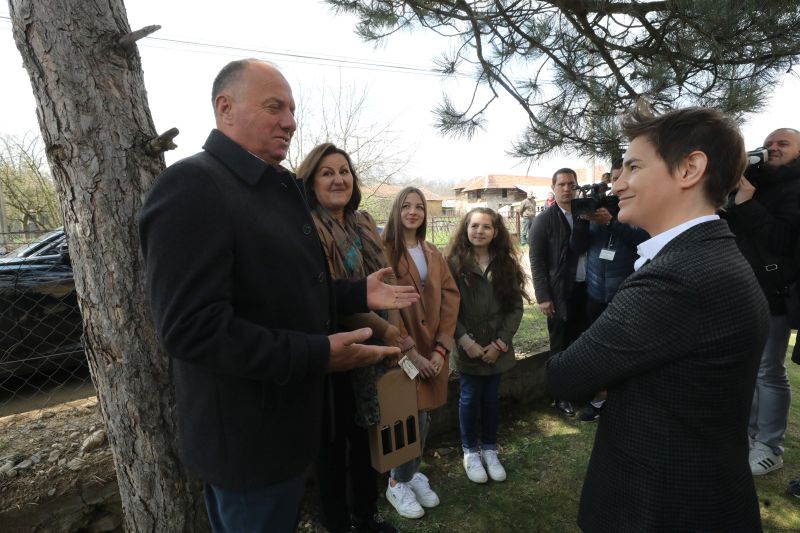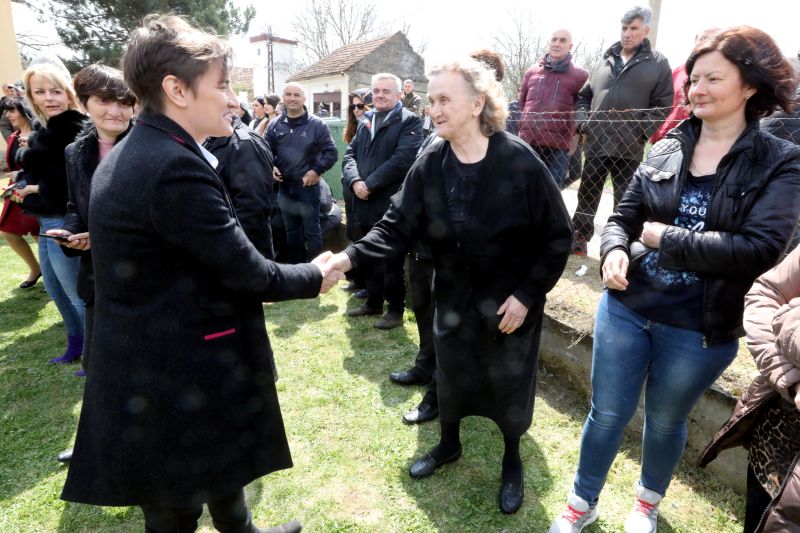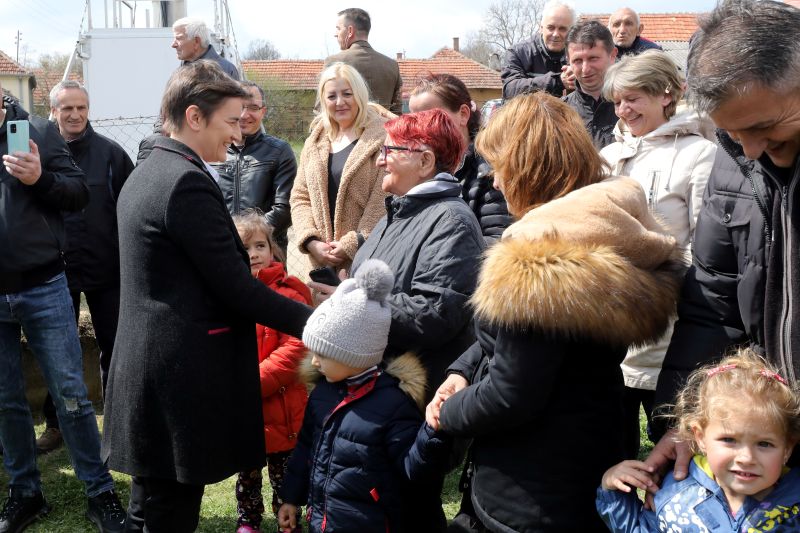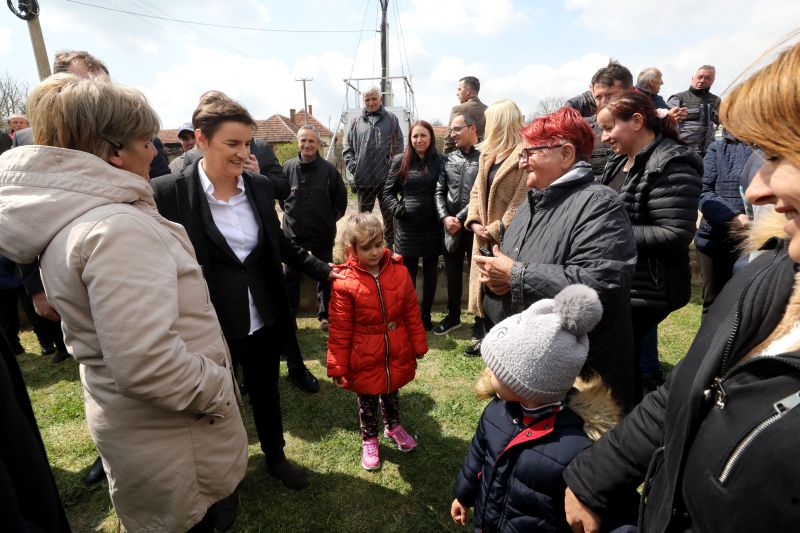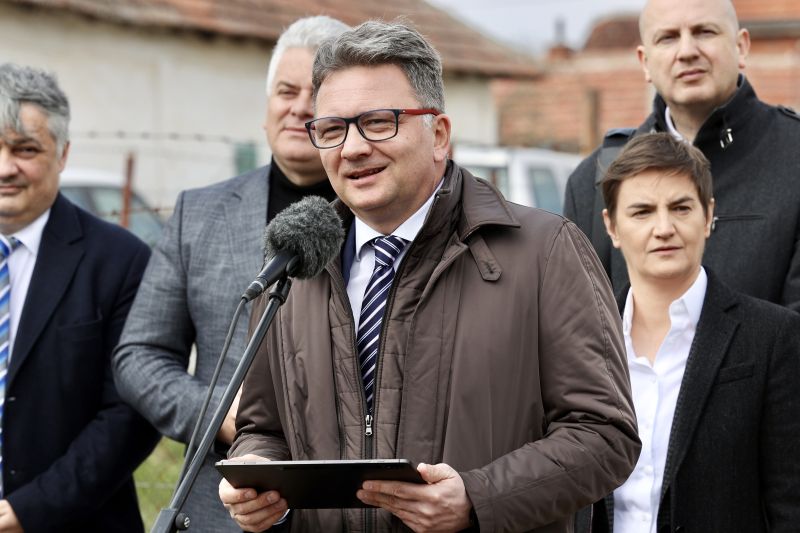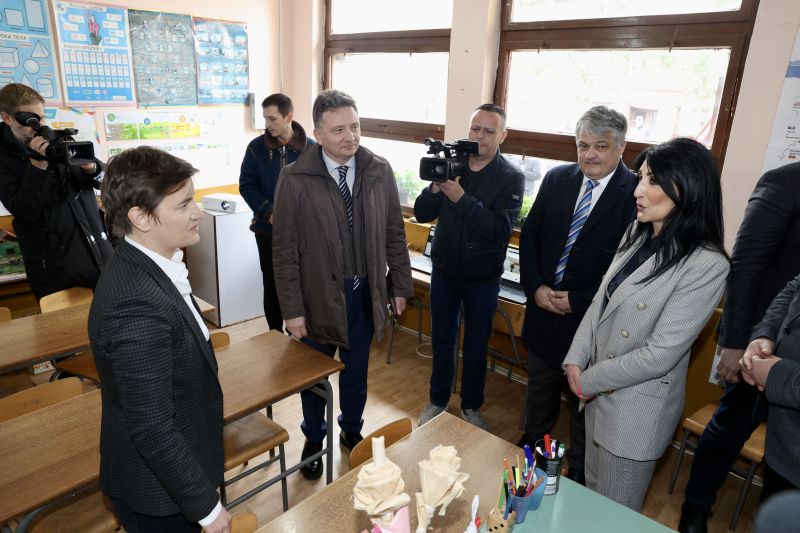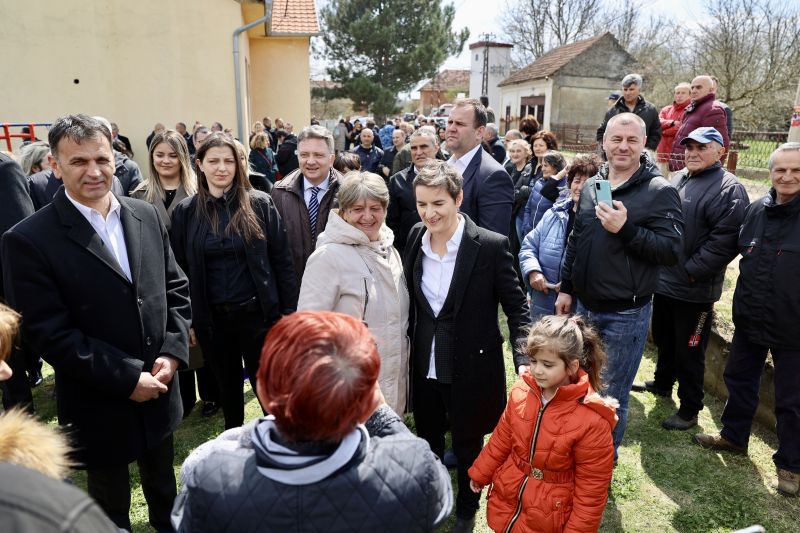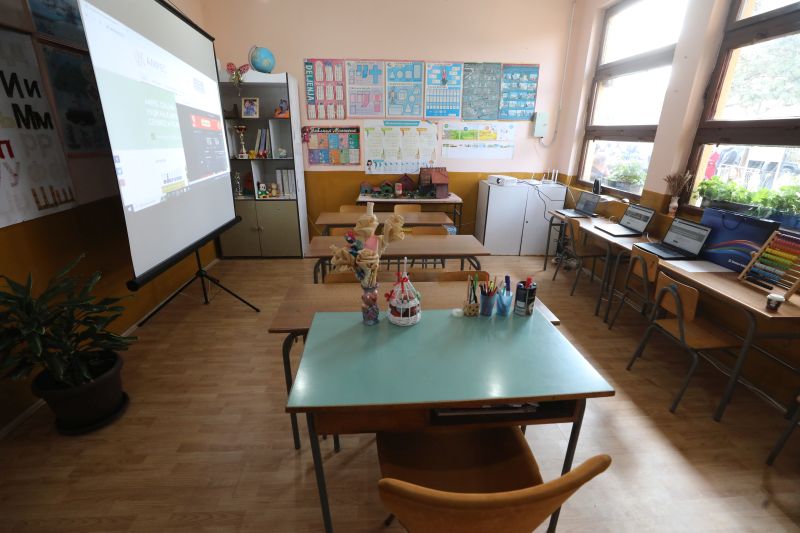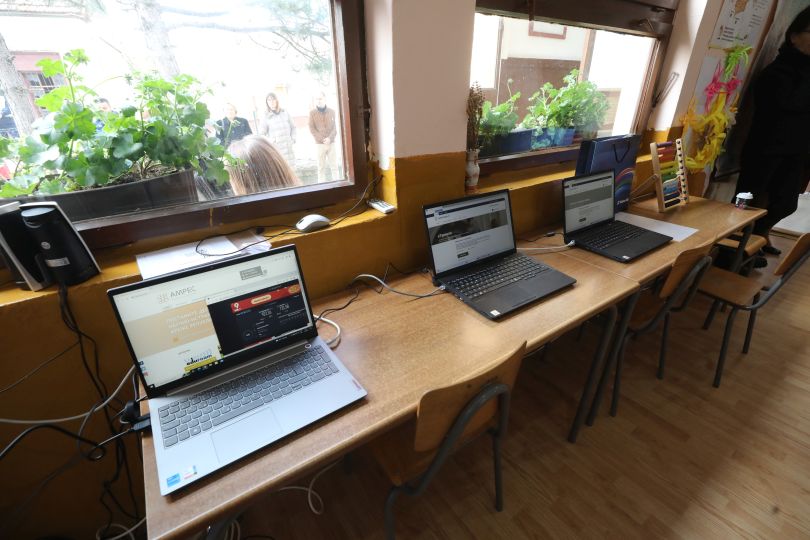Prime Minister Ana Brnabic and Minister of Information and Telecommunications Mihailo Jovanovic today visited the village of Gornje Svarce near Blace, on the occasion of the completion of works in that place, as part of the Broadband Telecommunication Infrastructure Construction Project in the Rural Areas of the Republic of Serbia.
- Serbia
Get to know Serbia
- Citizens
Culture and science
Health services
Pension and disability insurance
- Business
Employment
Economy
- Media
- Government
- Contact
Keep in touch
Keepin touch
Whether you have a question, comment, suggestion or any problem in the purview of the government, send us your message and we will try to respond as soon as possible. If your problem is not in our purview, we will forward your message to the relevant institution.
Construction of digital roads, introduction of high-speed Internet make state economically stronger
Brnabic pointed out that this project is the most important for our youngest citizens, in order to provide them with all the conditions for living and working in the places where they were born.
She emphasised that, according to the analyses of the World Bank, the importance of building digital roads and the introduction of high-speed Internet can be clearly seen, because it directly affects the economic strength of a country, as well as GDP growth.
The village of Gornje Svarce near Blace is the third place where we saw the progress of one of the most important digitisation projects in the Republic of Serbia that we are implementing, Brnabic pointed out.
Owing to the building of optical and telecommunication infrastructure, the inhabitants of this village get access to high-speed Internet with a flow rate of over 100 Mb/s.
So far, 75 percent of the country's territory has been covered by high-speed Internet, while the implementation of this project is expected to provide 99 percent of villages in Serbia with high-speed internet by the end of 2025.
Jovanovic noted that the introduction of the Internet in villages is important due to the availability of electronic administration services, digitisation of the education system and enabling digital teaching and digital content even in the smallest, satellite classes of elementary schools.
The Ministry of Information and Telecommunications has made a plan to introduce high-speed Internet in more than 700 villages by the end of 2025, to build more than 4,700 kilometres of roads for this purpose and to connect more than 120,000 households and about 720 school facilities.
Financing of this project with €120 million has been provided by the state, while the connection of households is carried out by telecommunication operators.
-
 Belgrade, 16 December 2025
Belgrade, 16 December 2025Serbia committed to strengthening friendly ties with Czech Republic
-
 Belgrade, 16 December 2025
Belgrade, 16 December 2025Intensifying overall cooperation between Serbia, Libya
-
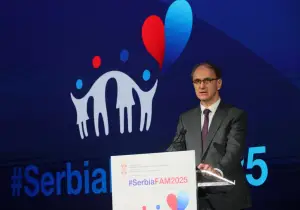 Belgrade, 16 December 2025
Belgrade, 16 December 2025Demographic measures permanent priority of state policy
-
 Novi Sad, 13 December 2025
Novi Sad, 13 December 2025Historical significance, lasting value of Mileva Marić Einstein’s work
-
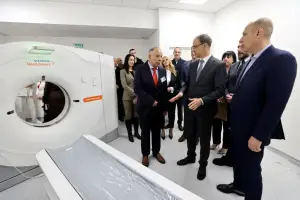 Niš, 12 December 2025
Niš, 12 December 2025Healthcare provided in Niš at highest level
-
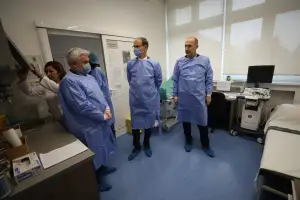 Aleksinac, 12 December 2025
Aleksinac, 12 December 2025Government’s goal to improve citizens’ quality of life
-
 Ražanj, 12 December 2025
Ražanj, 12 December 2025Balanced regional development one of main government tasks
-
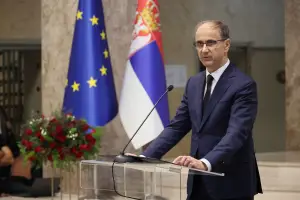 Belgrade, 10 December 2025
Belgrade, 10 December 2025Government working resolutely, dedicatedly to strengthen human rights system
-
 Belgrade, 10 December 2025
Belgrade, 10 December 2025Exchange of knowledge, experiences with Chinese Institute of Basic Research in Clinical Medicine
-
 Belgrade, 9 December 2025
Belgrade, 9 December 2025Green transformation one of strategic policies of Serbian government

